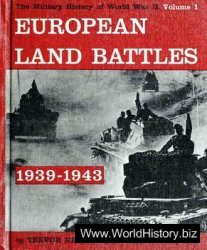The end of the Gupta Empire in 550 CE marked the end of the ancient period of India’s history. The following centuries would continue to bring changes, including rule by Middle Eastern nations and Europeans.
“Every generation in India, for over 4,000 years, has bequeathed something, if only a very little, to posterity. No land on earth has such a long cultural continuity as India. . . . In India, the brahman still repeats in his daily worship Vedic hymns composed over 3,000 years ago, and tradition recalls heroic chieftains and the great battles fought by them at about the same time. In respect of the length of continuous tradition, China comes second to India and Greece makes a poor third.”1
—A. L. Basham, a historian specializing in South Asia
The generations following India’s golden age saw leaders come and go. The 700s CE brought the first of many Middle Eastern invaders. Later, a string of Muslim empires known as the Delhi Sultanate controlled much of northern India from 1206 to 1526.
The Mughal Empire (1526-1858) followed. Its rulers were descended from the Mongols. The era was relatively peaceful, and culture thrived. One of India’s landmarks, the Taj Mahal, was born during this era. The emperor, Shah Jahan, built it in Agra as a mausoleum for his wife. Construction took almost 20 years.
All the while, trade continued between India and other countries. Portuguese traders arrived by sea in India at the end of the 1400s. Other Europeans followed in the 1600s, including the Dutch, French, and British. The British arrival in particular would have a lasting effect on India.
It grew and became successful and powerful, bit by bit, taking over the country. Eventually, the company used force to fight local people who revolted against it. The British government tried to control the company and ultimately disbanded it in 1858, installing a colonial government on the subcontinent.
The caste system continues to divide India’s people today. The names of the four main classes have not changed, though some of their areas of work reflect modernity. Brahmins focus on scriptural education and teaching. Kshatriyas are dedicated to public service. The Vaishya form a business caste. The Shudra caste consists of semiskilled and unskilled workers. Untouchables make up a fifth class, which consists of people considered the lowest of society. Today, the castes mingle in business and social situations. However, people rarely marry outside their caste, and a person cannot change his or her caste.
Direct rule by the British is known as the British Raj. It began in 1858. During that time, the British imposed their customs on Indian society, including the English language. Tea was a major crop, with India providing 59 percent of Britain’s supply. However, as the British prospered from exporting tea, the Indian people continued suffering. The poor remained poor, while the British living in India grew richer.
Independence movements began forming in the late 1800s. Finally, in 1947, India gained independence. In the process, it lost part of its northwest territory, which became part of Pakistan.
On January 26, 1950, India became a republic. After centuries of foreign rule, India was independent.
Since gaining its independence, India has warred with Pakistan. Other issues facing the nation have included overpopulation and poverty. However, the country has experienced tremendous economic growth in recent decades, too, becoming a power regionally and globally.
Ancient India’s contributions are apparent in India and abroad, and its influence on world religion is undeniable. The Hindu, Buddhist, and Jain belief systems that started so long ago continue. Hinduism is the third-largest religion in the world, with almost 1 billion followers, mostly in South Asia.2 Almost 81 percent of Indians are Hindu.3
Almost 6 percent of the world’s population practices Buddhism. Most Buddhists are in Southeast Asia, but the belief system’s following outside Asia is growing. Many people in Australia, Europe, North America, and South America follow the teachings of the Buddha.
Jainism has more than 4.5 million followers.4 Most of them are in India, but Jains also live in Africa, Europe, and North America.
India has a short history as a nation and a long history as a people. The Indian culture has continuity unlike any other. It is rich in tradition, religion, artistry, and knowledge, reflecting and building on its impressive and important past. The influence of the Indo-Aryans lives on daily for millions of modern Indians who practice Hinduism. But India’s history lives on in other ways. Yoga exists beyond India’s borders. And while the West has its own forms of medicine, Westerners are embracing holistic ideas such as those presented by Ayurveda. In addition, mathematical concepts used in ancient India, such as pi, are alive and well.
Very few people yet realize how great a debt the art of the world— especially that of the Eastern world—owes to India. It is true to say that without the example of Indian forms and ideas, the arts of the whole of South East Asia, of China, Korea, Mongolia, Tibet, and Japan would all have been radically different. ... So, too, would modern Western art, especially architecture and painting.5
—P. S. Rawson, art historian
India does not simply have a history, it is history. Those who inhabit the subcontinent live that history daily. They shape it and add to it, just as their ancestors did. As the young nation of India moves forward, it does so with an eye toward its past, its people well aware of themselves as a culture millennia old, adept, aware, artistic, and worthy of awe. Its rich, complex story continues to unfold.
“Every generation in India, for over 4,000 years, has bequeathed something, if only a very little, to posterity. No land on earth has such a long cultural continuity as India. . . . In India, the brahman still repeats in his daily worship Vedic hymns composed over 3,000 years ago, and tradition recalls heroic chieftains and the great battles fought by them at about the same time. In respect of the length of continuous tradition, China comes second to India and Greece makes a poor third.”1
—A. L. Basham, a historian specializing in South Asia
THE MAKING OF MODERN INDIA
The generations following India’s golden age saw leaders come and go. The 700s CE brought the first of many Middle Eastern invaders. Later, a string of Muslim empires known as the Delhi Sultanate controlled much of northern India from 1206 to 1526.
The Mughal Empire (1526-1858) followed. Its rulers were descended from the Mongols. The era was relatively peaceful, and culture thrived. One of India’s landmarks, the Taj Mahal, was born during this era. The emperor, Shah Jahan, built it in Agra as a mausoleum for his wife. Construction took almost 20 years.
All the while, trade continued between India and other countries. Portuguese traders arrived by sea in India at the end of the 1400s. Other Europeans followed in the 1600s, including the Dutch, French, and British. The British arrival in particular would have a lasting effect on India.
It grew and became successful and powerful, bit by bit, taking over the country. Eventually, the company used force to fight local people who revolted against it. The British government tried to control the company and ultimately disbanded it in 1858, installing a colonial government on the subcontinent.
The Caste System Today
The caste system continues to divide India’s people today. The names of the four main classes have not changed, though some of their areas of work reflect modernity. Brahmins focus on scriptural education and teaching. Kshatriyas are dedicated to public service. The Vaishya form a business caste. The Shudra caste consists of semiskilled and unskilled workers. Untouchables make up a fifth class, which consists of people considered the lowest of society. Today, the castes mingle in business and social situations. However, people rarely marry outside their caste, and a person cannot change his or her caste.
Direct rule by the British is known as the British Raj. It began in 1858. During that time, the British imposed their customs on Indian society, including the English language. Tea was a major crop, with India providing 59 percent of Britain’s supply. However, as the British prospered from exporting tea, the Indian people continued suffering. The poor remained poor, while the British living in India grew richer.
Independence movements began forming in the late 1800s. Finally, in 1947, India gained independence. In the process, it lost part of its northwest territory, which became part of Pakistan.
On January 26, 1950, India became a republic. After centuries of foreign rule, India was independent.
Since gaining its independence, India has warred with Pakistan. Other issues facing the nation have included overpopulation and poverty. However, the country has experienced tremendous economic growth in recent decades, too, becoming a power regionally and globally.
RELIGIOUS CONTRIBUTIONS
Ancient India’s contributions are apparent in India and abroad, and its influence on world religion is undeniable. The Hindu, Buddhist, and Jain belief systems that started so long ago continue. Hinduism is the third-largest religion in the world, with almost 1 billion followers, mostly in South Asia.2 Almost 81 percent of Indians are Hindu.3
Almost 6 percent of the world’s population practices Buddhism. Most Buddhists are in Southeast Asia, but the belief system’s following outside Asia is growing. Many people in Australia, Europe, North America, and South America follow the teachings of the Buddha.
Jainism has more than 4.5 million followers.4 Most of them are in India, but Jains also live in Africa, Europe, and North America.
OLD PRACTICES IN A NEW ERA
India has a short history as a nation and a long history as a people. The Indian culture has continuity unlike any other. It is rich in tradition, religion, artistry, and knowledge, reflecting and building on its impressive and important past. The influence of the Indo-Aryans lives on daily for millions of modern Indians who practice Hinduism. But India’s history lives on in other ways. Yoga exists beyond India’s borders. And while the West has its own forms of medicine, Westerners are embracing holistic ideas such as those presented by Ayurveda. In addition, mathematical concepts used in ancient India, such as pi, are alive and well.
Art and Architecture
Very few people yet realize how great a debt the art of the world— especially that of the Eastern world—owes to India. It is true to say that without the example of Indian forms and ideas, the arts of the whole of South East Asia, of China, Korea, Mongolia, Tibet, and Japan would all have been radically different. ... So, too, would modern Western art, especially architecture and painting.5
—P. S. Rawson, art historian
India does not simply have a history, it is history. Those who inhabit the subcontinent live that history daily. They shape it and add to it, just as their ancestors did. As the young nation of India moves forward, it does so with an eye toward its past, its people well aware of themselves as a culture millennia old, adept, aware, artistic, and worthy of awe. Its rich, complex story continues to unfold.




 World History
World History









